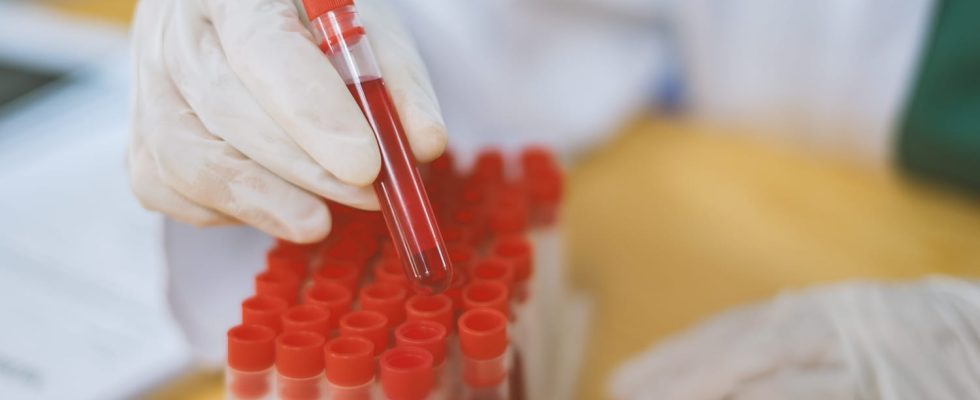The blood test for the transferrin saturation coefficient is part of the iron balance. It allows to determine an iron deficiency or on the contrary, in hyperproduction. How to calculate it? What are the standards?
Definition: what is the saturation coefficient?
Transferrin is a protein in the blood that is responsible for transporting iron to the organs. Like the total transferrin-binding capacity (TIBC), the saturation coefficient is a marker of iron metabolism which makes it possible to know the iron reserves of a person.
“The transferrin saturation coefficient is calculates from the iron we have in the blood. Transferrin is a protein that transports iron, necessary for the synthesis of red blood cells and the percentage of saturation is calculated. We dose the transporter and the iron, then we calculate a saturation coefficient which will be expressed as a percentage. This calculation is important because it allows us to see if we are in deficiency or in hyperproduction”explains Dr. François Blanchecotte, president of the Union of Biologists.
What are the standards of the saturation coefficient?
The standards for a biological examination vary from one laboratory to another and according to the technique used, but overall they are between 20 and 40% in a man and between 15 and 35% in a woman. “During the menstrual cycle, the values can go down to minus 30% or even minus 10%. What you have to look for is the mechanism. Because to make red blood cells, you also need vitamin B12 and B9, and if we don’t treat these deficiencies, the GR rate will not be able to go up”, specifies the President of the Union of Biologists.
“Tea decreases iron absorption”
Low saturation coefficient
The saturation coefficient is low if it is less than 20%. In this case, it indicates a anemia related primarily to iron deficiency or hemorrhage, inflammatory disease, digestive iron malabsorption, or cancer. “In the child, this can be explained by the fact that he eats badly and in adults because we have increased iron needs, especially during pregnancy because the baby has a lot of nutritional needs provided by the placenta”, observes the specialist.
The only way to increase our synthesis of red blood cells, is to increase our iron intake : either by medication or by food, knowing that our daily needs are between 1 and 2 mg. “Iron regulation is difficult to do, especially because of meatless diets. You should also know that tea decreases iron absorption and that iron-based drugs tend to constipate. When the deficiency is really important, we are obliged to firon injection area“ says the biologist.
High saturation coefficient
A very high saturation coefficient suggests a hemochromatosis. “It’s a genetic disease due to excessive intestinal absorption of iron. As we cannot systematically search for genes because it is expensive, there must be two higher saturation coefficients on two biology examinations in a row for the doctor to have the right to prescribe a reimbursed examination of the genetic markers of hemochromatosis”notes Dr. François Blanchecotte.
In a man, it is usually diagnosed between the ages of 30 and 50.. And to specify: “The only treatment is bleeding and after 4 to 6 years, there will be a regulation of the system, the person will be cured. In a woman, as there are periods, we can only really diagnose her from the menopause. If hemochromatosis is not treated, it riskscause joint pain and serious bone problems.”
Thank you to Dr. François Blanchecotte, president of the Syndicat des biologistes.
